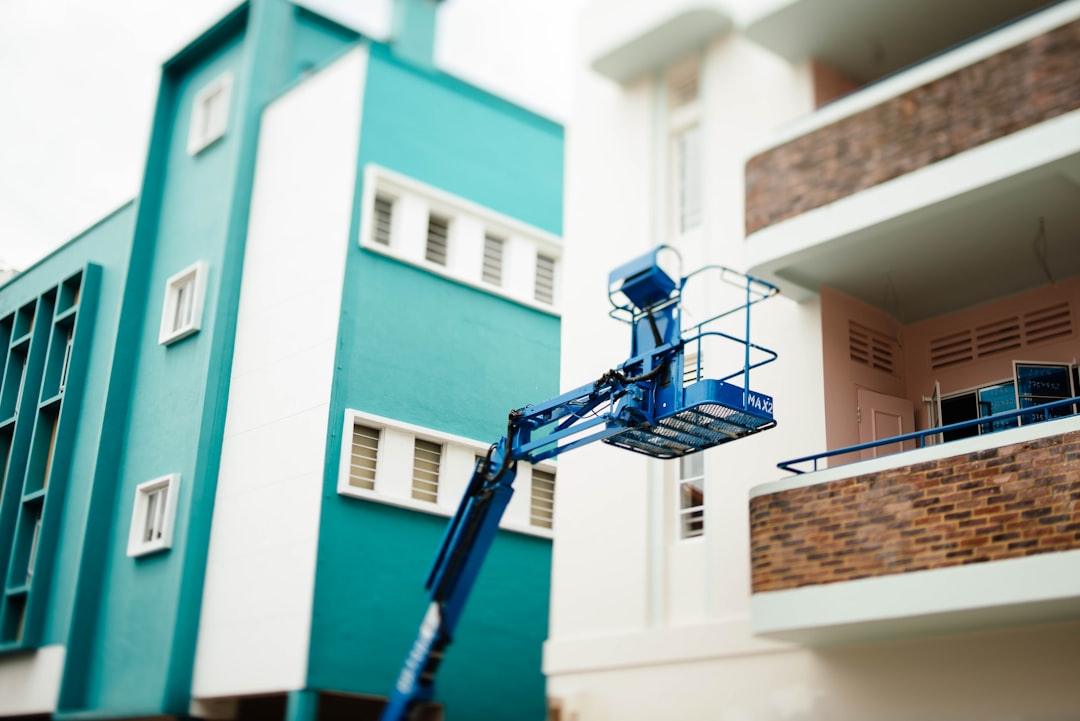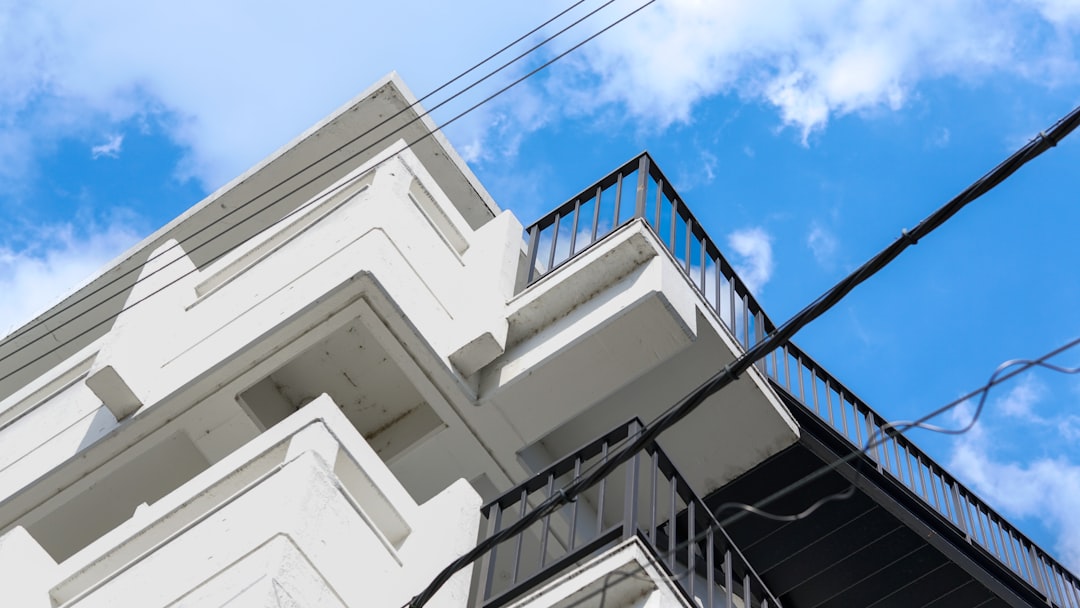

Engage prospects with a scan and streamline customer engagement with FREE QR code marketing tools by Sona – no strings attached!
Create a Free QR CodeFree consultation

No commitment

Engage prospects with a scan and streamline customer engagement with FREE QR code marketing tools by Sona – no strings attached!
Create a Free QR CodeFree consultation

No commitment
QR codes have rapidly become a powerful, strategic asset in connecting offline engagement with actionable online processes. For real estate maintenance protection services, QR codes eliminate friction and dramatically improve efficiency by facilitating property maintenance workflows, asset tracking, and documentation of service history, all without app downloads or complicated onboarding.
Property managers consistently deal with paperwork bottlenecks, fragmented asset data, and missed service requests. Manual errors and incomplete records can lead to overlooked maintenance, slower response times, and diminished tenant satisfaction. Modern QR solutions enable tenants, maintenance teams, and managers to scan and gain immediate access to maintenance tracking and request forms or instructional content, solving many recurring workflow issues.
This guide explores how to deploy QR codes across assets and touchpoints to automate maintenance requests, enhance asset tracking, and streamline communication within property management. You will discover how to close visibility gaps, capture more leads, and deliver better protection services by integrating QR codes into your daily operations.

QR codes bridge the gap between physical touchpoints and digital outcomes, solving common frustrations for maintenance protection services: loss of leads, delays, and manual errors. The key is to map every offline interaction to a clear, simple digital action that reduces effort for tenants and staff while feeding your CRM with high-intent data.
Start by identifying your paper-heavy and analog processes. If you are still relying on laminated instruction cards, clipboards for work orders, paper inspection sheets, or voicemail-driven requests, QR codes can replace each with a scan-to-action flow. With dynamic QR codes, you can evolve destinations as your process changes without reprinting, which means you can continuously optimize your workflow.
These practices transform outdated processes into real-time, trackable experiences that empower teams and eliminate lost opportunities. You reduce friction for tenants and contractors, shorten cycle times, and gain reliable data to drive operational and revenue decisions.

Disconnected workflows, incomplete asset visibility, and missed communications have long created risk for property maintenance teams. QR codes directly link physical materials like signage, asset tags, and service logs to actionable digital workflows that remove delays, capture every interaction, and eliminate guesswork. Instead of hoping tenants read a notice or remember a phone number, you provide a one-scan path to the exact action they need to take.
Without QR-powered engagement, identifying service requests or high-value leads becomes challenging. You rely on manual transcription, voicemail callbacks, and scattered emails. Advanced QR implementations provide instant data on who is engaging, when, and for what purpose. This visibility improves resource allocation, reporting, and tenant follow-up, transforming anonymous interactions into actionable data.
As a result, QR codes deliver a better tenant experience, tighter compliance, and clearer data to guide everything from staffing to capital planning.
Maintenance organizations use a few specific QR configurations to address documentation, engagement, and compliance. Each format solves a different problem, and choosing the right one is essential to maximizing adoption and measurable outcomes.
With dynamic tools like Sona QR, you can generate any of these formats and manage them from a single dashboard. Dynamic codes are ideal for trackability, content updates, and A/B testing of destinations. Static codes are appropriate for fixed, evergreen downloads like a PDF tenant guide that rarely changes. In most operational scenarios, dynamic is the better fit because it gives you flexibility and data that you can use to improve performance.

A lack of visibility into property touchpoints often leads to missed or misrouted leads. With QR codes, every surface can become a conversion or service intake point, and every scan becomes a data signal that you can route, score, and act on immediately.
Begin by mapping your high-traffic areas and recurring service interactions. Look for moments when a tenant needs to ask for help, when a contractor needs instructions, or when an owner evaluates protection plans. In multifamily, this includes lobbies, mailrooms, elevators, laundry rooms, and inside units. In commercial buildings, focus on loading docks, mechanical rooms, and tenant common areas. In HOA and single-family portfolios, consider community boards, pool areas, and mailed welcome packets.
These placements increase follow-up, capture contact details that once went untracked, and improve safety and compliance by funneling people to the right workflows.

Maintenance teams struggle to respond proactively without connected records and consistent intake. QR codes activate clean, real-time data and standardized processes that raise the bar on responsiveness, safety, and tenant satisfaction. The most valuable use cases meet a recurrent need and reduce friction at the point of action.
Strategically embedding these use cases closes gaps that cause delay and dissatisfaction. You create a reliable, measurable intake system that feeds your CRM, maintains audit-ready logs, and removes guesswork from daily operations.
Each scan is a strong signal of intent because it happens at a precise time and place. By deploying multiple QR codes across journey stages, you can segment audiences automatically and power targeted follow-ups that convert interest into actions like plan enrollment, preventive maintenance bookings, or renewals.
Map distinct QR codes to key moments. For example, a Scan for urgent repair on equipment produces a very different signal than a Scan to learn about protection plans on a direct mail postcard. With dynamic QR codes from Sona QR, each code carries tags for property, placement, and purpose, which you can sync to your CRM for segmented campaigns.
The result is a smarter, high-precision marketing engine where scans turn into qualified segments. Leads receive communications based on who they are and what they tried to do, which raises conversion rates and improves tenant satisfaction.
QR codes unify print and digital, making your offline marketing measurable and interactive. When you add a QR code to brochures, mailers, building signage, vehicle decals, or community events, you eliminate the friction of typing URLs and you can practice offline attribution to each campaign and placement.
To maximize impact, match QR design and calls to action to the environment. A lobby sign can be larger with a short, bold CTA. A small appliance label needs a clear icon and concise copy. Always design for scan distance, glare, and lighting conditions, and test placement before rolling out at scale.
QR codes act as the offline onramp to your digital marketing engine. With a centralized platform like Sona QR, you can manage codes for every channel, analyze performance by media and property, and sync scan data to your CRM and ad platforms.
When you operationalize QR codes, consistency matters. A clear checklist ensures every campaign aligns with your goals, meets brand standards, and captures the data you need for optimization. The following framework works for maintenance intake, protection plan offers, and contractor workflows.
Start with one or two high-impact use cases to establish quick wins, such as a maintenance request QR in elevators or a plan enrollment QR on invoices. Validate your flows end to end, then expand to asset tagging, direct mail, and event deployments once you have proven adoption and ROI.
Define exactly what you want the scanner to do. For example, Instant maintenance request submission for tenants or Get a same-day quote for landlords. The more specific the action, the better your conversion rate and the easier it is to measure success.
Your QR format should match the action and the need for measurement. In most cases, dynamic QR codes are the right choice because they enable tracking and future updates.
Design influences scan rates. See QR in marketing. Make your QR easy to notice and easy to scan. Include a compelling, benefit-driven CTA and test scannability in the real environment before you launch.
Start where scans are likely and stakes are high. Elevators, lobbies, mechanical rooms, and invoices are prime placements. Direct mail with personalized URLs and UTMs helps attribute leads by building or neighborhood.
Treat QR campaigns like any performance channel. Monitor scan volume, conversion rates, and time-to-resolution. Use insights to improve copy, placement, and workflow design.

Connecting physical engagement to business results is essential in maintenance protection services. You need to know which signs, assets, or campaigns drive requests, enrollments, and renewals, and you need that insight fast enough to act. Real-time QR analytics provide the foundation for both operational excellence and growth.
Traditional print cannot tell you who engaged or when. With dynamic QR codes, you capture high-fidelity signals at the moment of interest. This enables accurate routing, faster responses, and measurable revenue attribution. By centralizing this data in Sona QR and connecting it to Sona, an AI-powered platform for identity and attribution, you transform scans into a full-funnel performance channel.
When you can prove that an elevator sticker drove 50 service requests and 12 plan upgrades in a month, it becomes simple to justify expansion and refine your strategy with confidence.
The best QR programs do more than enable scanning. They create seamless, end-to-end experiences that reduce friction for tenants and staff, protect safety and compliance, and drive measurable revenue outcomes. A few proven practices can help you reach that level of performance quickly.
First, unify your QR strategy across properties. Standardize designs, CTAs, and destinations. Maintain a source-of-truth dashboard where operations and marketing share insights. Second, automate follow-up. Scans should trigger instant confirmations, scheduling options, and relevant content so that momentum is never lost.
Implementing these strategies simplifies inventory management, raises compliance rates, and turns every building interaction into a measurable digital touchpoint. Over time, you will see fewer missed requests, faster response times, and a steady rise in plan inquiries and renewals.
QR codes are more than a shortcut. They are a comprehensive strategy for real estate maintenance protection services seeking operational excellence and superior customer engagement. By turning every physical asset and service encounter into a measurable digital touchpoint, property managers can capture more leads, ensure audit-ready records, and enhance responsiveness. Adopting robust QR workflows offers a transformative path to more efficient, data-driven, and customer-centric property management.
As you roll out your program, start with one or two high-impact use cases and measure results closely. Use Sona QR to generate dynamic codes, monitor performance in real time, and sync scan data with your CRM. Then expand placements and refine messaging based on analytics. If your goals include attribution to revenue, connect Sona QR data to Sona.com to unify offline scans with web, email, and CRM activity for a full view of the journey, and learn more about revenue attribution.
Start creating QR codes for free. With a few well-placed codes and clear CTAs, you will turn unmeasured moments into trackable results, reduce operational friction, and reliably capture demand where it starts.
QR codes have revolutionized real estate maintenance protection services by turning routine property management interactions into powerful lead capture and engagement opportunities. Whether it’s streamlining maintenance requests, enhancing tenant communication, or providing instant access to protection plans, QR codes transform static signage and documents into dynamic, measurable touchpoints that drive customer acquisition and improve service satisfaction.
Imagine instantly knowing which maintenance notices or protection service offers pique tenant interest—and being able to update those campaigns on the fly without costly reprints. With Sona QR, you can create dynamic, trackable QR codes in seconds, monitor every scan, and connect engagement data directly to your lead generation efforts. No more missed leads or guesswork—just smarter, more effective real estate maintenance marketing.
Start for free with Sona QR today and turn every scan into a new opportunity to protect properties and grow your client base.
QR codes enable immediate access to maintenance tracking, request forms, and asset information by scanning property assets and touchpoints, which automates maintenance requests and enhances workflow efficiency without requiring app downloads.
QR codes reduce paperwork bottlenecks, eliminate manual errors, improve tenant satisfaction, provide real-time data on maintenance requests, enable dynamic content updates, reduce costs, and deliver better communication and compliance.
By placing unique QR codes at points of action, scans capture lead information at the moment of intent, feeding CRM systems with high-intent data to segment audiences and trigger targeted follow-ups that convert interest into service requests or plan enrollments.
Use cases include maintenance request intake at the point of issue, asset verification and service history access, emergency procedure display, protection plan enrollment, move-in orientation, and contractor verification through badges or vehicle decals.
They can place QR codes on signage, equipment tags, direct mail, leasing materials, and common areas to provide instant access to maintenance forms, instructional content, emergency procedures, contact details, and protection plan options, improving communication and engagement.
Common formats include web links for maintenance forms and documentation, vCards for contact info sharing, SMS or email pre-fill for urgent alerts, Wi-Fi access for guest areas, and app download links for specialized vendor tools.
Static QR codes are fixed and used for unchanging content like PDFs, while dynamic QR codes can be updated, tracked, support analytics, and enable A/B testing, making them ideal for campaigns and measurable workflows.
High-traffic and action points such as elevators, lobbies, mechanical rooms, equipment tags, direct mail, door hangers, contractor badges, vehicle decals, leasing centers, and move-in packets are ideal placements.
Real-time analytics track scan events by time, location, and campaign, enabling resource allocation, performance measurement, immediate routing of urgent requests, CRM integration, revenue attribution, and optimization of marketing efforts.
Steps include choosing a clear use case, selecting the appropriate QR code type, designing and testing the code, deploying it across high-impact channels, training staff, and continuously tracking and optimizing performance.
QR codes provide tenants with easy, app-free access to maintenance requests and instructions, and display emergency procedures on safety equipment, which improves response times, safety compliance, and overall tenant satisfaction.
Dynamic QR codes replace paper forms and notices with mobile-friendly, updatable links, reduce manual errors, enable measurable engagement, and allow quick content changes without reprinting materials.
By mapping distinct QR codes to specific actions and audience segments, scan data can be synced with CRM and ad platforms to trigger targeted follow-ups, nurture leads, and build custom retargeting audiences based on user intent.
Best practices include branding the QR code with a clear CTA, ensuring high contrast and appropriate size, testing scanning conditions on multiple devices, placing codes where actions occur, and training staff and tenants on code use.
QR codes replace bulky printed materials with a few smart, durable labels and signs that can be updated digitally, reducing printing costs, paper waste, and the need for frequent reprints.
Use Sona QR's trackable codes to improve customer acquisition and engagement today.
Create Your FREE Trackable QR Code in SecondsJoin results-focused teams combining Sona Platform automation with advanced Google Ads strategies to scale lead generation

Connect your existing CRM

Free Account Enrichment

No setup fees
No commitment required

Free consultation

Get a custom Google Ads roadmap for your business






Launch campaigns that generate qualified leads in 30 days or less.
